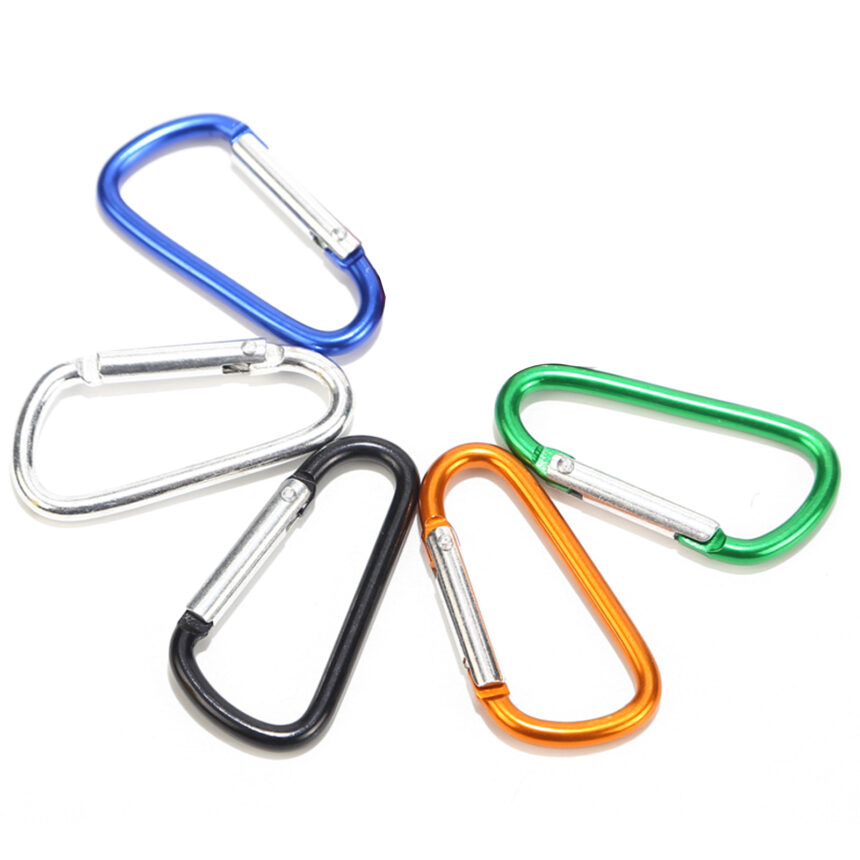When it comes to outdoor adventures, having the right gear can make all the difference. Among the essentials that every adventurer should have is a sturdy carabiner. These small yet mighty metal clips are not just for climbers; they are versatile tools that can enhance your outdoor experience in numerous ways. Whether you’re scaling cliffs, hiking through rugged terrain, or simply setting up camp, a reliable carabiner can be your best ally. Let’s dive into everything you need to know about these handy little devices and why they deserve a spot in your gear collection.
Types of Carabiners: Screw Gate, Twist Lock, and Auto Lock
Carabiners come in various designs, each tailored for specific needs.
The screw gate carabiner is a classic choice. It features a threaded sleeve that screws down to secure the gate. This design provides added safety by preventing accidental openings, making it ideal for climbing and belaying.
Next up is the twist lock carabiner. This type has a mechanism that requires you to twist and pull to open the gate. It’s slightly quicker than the screw gate but still offers reliable security against unintentional release.
Then there’s the auto-locking carabiner, which takes convenience up a notch. With an automatic locking mechanism, these are perfect for those who want peace of mind without extra steps during high-pressure situations like rock climbing or rescue operations.
Each type serves its purpose well, catering to adventurers’ varied preferences and activities.
Uses of Carabiners in Outdoor Activities
Carabiners are incredibly versatile tools, essential for a variety of outdoor activities. Whether you’re climbing, hiking, or camping, they play a crucial role in enhancing safety and convenience.
In rock climbing, carabiners connect ropes to harnesses and anchors. They ensure that climbers remain secure while scaling heights.
For hikers and backpackers, these handy devices can attach gear to packs easily. Think water bottles, sleeping bags, or even keys—all within quick reach.
Additionally, in mountaineering or caving adventures, carabiners help rig systems used for rappelling or belaying fellow adventurers.
They also shine during casual outings like picnics; use them to hang food bags from trees to keep critters at bay. Their lightweight design makes them perfect companions on any journey into the wild.
With so many applications across different activities, it’s clear why carabiners have become staples for outdoor enthusiasts everywhere.
Choosing the Right Carabiner for Your Needs
Selecting the right carabiner can make a significant difference in your outdoor experience. Consider the activities you’ll be engaging in. If you’re climbing, opt for a strong, lightweight option that meets safety standards.
Material matters too. Aluminum carabiners are usually preferred due to their strength-to-weight ratio while steel ones offer additional durability for heavy loads.
Next, think about locking mechanisms. Screw gate carabiners provide reliability but require manual locking. Twist lock options add an extra layer of security with less effort than screw gates, whereas auto-locking varieties ensure safety without any fuss.
Size and shape also influence functionality. A larger opening allows easier clipping onto gear or harnesses, while different shapes—like oval or D-shaped—enhance weight distribution depending on your needs.
Don’t overlook compatibility with other gear either; ensure it fits well with your ropes and slings to maximize performance during your adventures.
How to Properly Use a Carabiner
Using a carabiner correctly is essential for safety and efficiency. First, always ensure that the gate is fully closed before applying any load. A simple click can give you peace of mind.
When attaching it to gear, make sure you’re using the right orientation. The spine should bear the weight, while the gate faces away from pressure points. This positioning prevents accidental openings.
For climbing or belaying, avoid cross-loading — this happens when forces are applied sideways rather than straight down. It can weaken your setup significantly.
Regularly inspect your carabiners for wear and damage. Look out for signs like cracks or bent shapes; these could compromise their strength during use.
Remember to keep them clean too! Dirt or debris in moving parts can hinder performance over time, so wipe them down after each adventure.
Safety Tips When Using a Carabiner
When using a carabiner, safety should always be your top priority. First and foremost, inspect your carabiner before each use. Look for any signs of wear or damage that could compromise its strength.
Always ensure you are using the correct type of carabiner for your activity. Different environments require different specifications—what works for climbing may not suit camping.
Properly gate closure is essential. Make sure it’s locked securely to prevent accidental openings during use.
Avoid loading the carabiner sideways; this can significantly reduce its strength and increase risk. Instead, load it along the spine whenever possible.
Never exceed the recommended weight limit indicated on the product label. This small step could make all the difference in ensuring a safe adventure outdoors. Stay vigilant and enjoy your time with peace of mind!
Alternatives to Traditional Carabiners
If you’re looking for alternatives to traditional carabiners, there are several options worth considering. One popular choice is the quick link, a metal connector that provides a secure way to join two components without the need for a screw mechanism.
Another option is the climbing daisy chain, which features multiple sewn loops. It’s great for creating adjustable anchor points in climbing or rescue situations.
For those who prefer something lightweight and compact, consider using webbing slings or straps. These can effectively replace carabiners in many applications while offering versatility.
Magnetic connectors have emerged as an innovative alternative. They offer quick attachment and detachment but should be used with caution due to their varying strength ratings.
Each of these alternatives has its unique benefits tailored to specific activities and preferences. Always evaluate your needs before making a switch from traditional carabiners.
Conclusion
Carabiners are an essential tool for anyone who enjoys outdoor adventures. Their versatility, reliability, and ease of use make them a must-have for climbers, hikers, campers, and even everyday activities. Understanding the different types—screw gate, twist lock, and auto lock—can help you choose the right one for your specific needs.
When using a carabiner in various outdoor activities like climbing or securing gear while hiking or camping, knowing how to properly attach and detach it is vital. Adhering to safety guidelines ensures that you maximize their effectiveness while minimizing risks.
For those looking for alternatives to traditional carabiners, there are innovative options available that might suit your preferences better. Regardless of your choice, being informed about features and proper usage will enhance your experience outdoors.
Embracing the utility of carabiners can significantly elevate your adventure game. Whether you’re scaling cliffs or enjoying a casual day out in nature with friends or family, having this reliable companion at hand makes all the difference.


